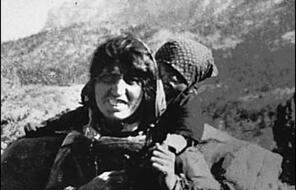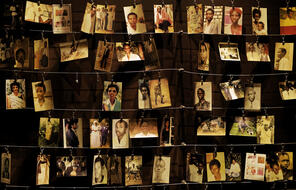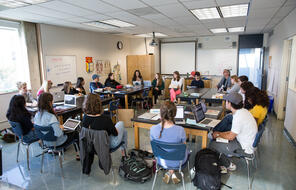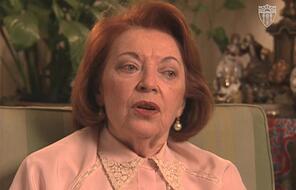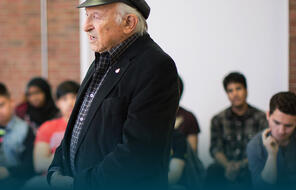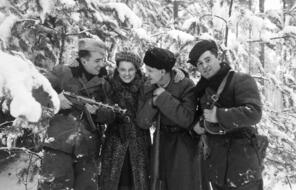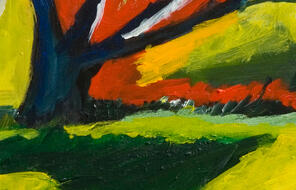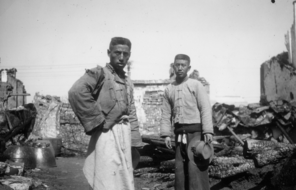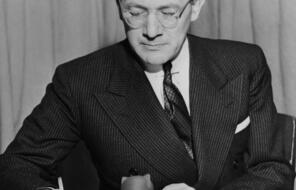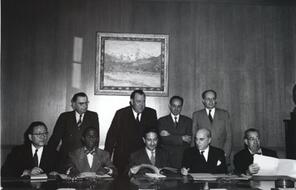Humanity on Trial
At a Glance
Language
English — USSubject
- History
- Social Studies
- Genocide
The tensions between the Ottoman government and the Armenians erupted in 1894 after the Hunchak party in Sassun encouraged ordinary Armenians—farmers, peasants, and merchants, frustrated by their second-class status as symbolized by double taxation—to withhold their taxes. Ottoman troops were sent in to stop the protest. Instead of restoring the peace, the soldiers began massacres that would spread throughout the Turkish Armenian provinces during the winter of 1895-1896. The semi-regular Hamidye regiments of Kurdish and Circassian horseman carried out the campaign. In all nearly 200,000 Armenian were killed in the massacres. Reports of the massacre were smuggled out of Turkey and later collected as part of an official investigation conducted by the British, French, and Russian governments. The first public mention of the massacre to an outside source came on September 26, 1894. In published accounts of the massacres, names were withheld or replaced with initials in an effort to prevent retribution.
Troops have been massed in the region of the large plain near us. Sickness broke out among them, which took off two or three victims every few days. It was a good excuse for establishing quarantine around, with its income from bribes, charges, and the inevitable rise in the price of already dear grain. I suspect that one reason for placing a quarantine was to hinder the information as to what all those troops were about in that region….The sickening details are beginning to come in . . . it has been the innocent who have been the greatest sufferers. Forty-eight villages are said to have been wholly blotted out.
By late October more details of the massacres were known.
We have word from Bitlis that the destruction of life in Sassoun, south of Moosh, was even greater than supposed. The brief note that reached us says: “Twenty more villages annihilated in Sassoun. Six thousand men, women, and children massacred by troops and [Kurds]. The awful story is just beginning to be known here, though the massacre took place early in September. The Turks have used infinite plans to prevent news leaking, even going to the length of sending back from Trebizond many hundreds from the Moosh region who had come this way on business.” The massacre was ordered from Constantinople in the sense that some [Kurds] having robbed Armenian villages of flocks, the Armenians pursued and tried to recover their property, and a fight ensued in which a dozen [Kurds] were killed. The slain were semi-official robbers, “i.e. enrolled as troops and armed as such, but not under control.” The authorities then telegraphed to Constantinople that Armenians had “killed some of the Sultan’s troops” and they did it; only, not finding any rebellion, they cleared the country so that none should occur in the future. 1
It was common for Ottoman officials to describe the massacres of the Armenians as a justified response to armed rebellion. Despite those claims, British historian Lord Kinross observed that each massacre followed a similar pattern.
First into town came Turkish troops, for the purposes of massacre; then came the Kurdish irregulars and tribesmen for the purposes of plunder. Finally came the holocaust, by fire and destruction, which spread, with the pursuit of fugitives and mopping-up operations, throughout the lands and villages of the surrounding provinces. This murderous winter of 1895 saw the decimation of much of the Armenian population and the devastation of their property in more than twenty districts in eastern Turkey. Often the massacres were timed for a Friday, when the Muslims were in their mosques and the myth was spread by the authorities that the Armenians conspired to slaughter them at prayer. 2
Ottoman soldiers recorded their participation in the massacres in letters they sent home. These letters offer a glimpse of the way Armenians had become dehumanized in the eyes of the soldiers. One soldier wrote:
My brother, if you want news from here we have killed 1,200 Armenians, all of them as food for the dogs . . . Mother, I am safe and sound. Father, 20 days ago we made war on the Armenian unbelievers. Through God’s grace no harm befell us. . . . There is a rumor that our battalion will kill all the Armenians there. Besides, 511 Armenians were wounded, one or two perish every day. 3
Reports of the massacres horrified members of the United States Congress. In December 1895, Senator Wilkinson Call, a Democrat from Florida, proposed a resolution calling for the creation of an independent Armenian state protected by the “civilized” nations of the world. Although the resolution proved too radical for the Committee on Foreign Affairs, the Committee did support the resolution of Senator Shelby Collum of Illinois condemning the massacres. Senator Collum urged President Grover Cleveland to take a stand
Destruction and rapine have been and now are the orders obeyed in the beautiful valleys and on the rugged hills of Armenia. There has been no war, no conflict between the two contending powers, but a merciless, pitiless tornado of bloody ruin. . . .
Has it come to this, that in the last days of the nineteenth century humanity itself is placed on trial? 4
Although Congress passed Collum’s resolution, President Cleveland refused to support the measure, fearing the military and economic repercussions such an action would have on relations between the Ottoman Empire and the United States. Without US support, the European and Russian governments continued to pressure the sultan to implement the reforms promised in The Treaty of Berlin. While diplomats talked, massacres of Ottoman Armenians continued intermittently until January 1896.
Connection Questions
- Turkish officials commonly characterized protests by Armenians and other minority groups within the Ottoman Empire as rebellion. The government spread false rumors to confuse the facts and justify slaughter. Without an independent press, official fabrications often went unchallenged. It is often said that a lie repeated over and over again becomes the truth. How does that happen? How do you think those distortions influenced the way Turks thought about Armenians?
- Lord Kinross writes: “Often the massacres were timed for a Friday, when the Muslims were in their mosques and the myth was spread by the authorities that the Armenians conspired to slaughter them at prayer.” What is the danger when religious differences are exploited to reinforce a “we” and “they”? How do you learn about people who practice other religions? What can be done to build trust across religious divisions?
- Richard Hovannisian believes the Ottoman massacres were “the way traditional regimes respond to calls for change and equality.” Why would traditional regimes respond to calls for change with slaughter? How is a democracy supposed to respond to dissent? What protections are there for those that advocate for change in your community? School? Country?
- In a letter to his family, an Ottoman soldier writes: “We have killed 1,200 Armenians, all of them as food for the dogs. . . Father, 20 days ago we made war on the Armenian unbelievers.” How do explain his attitude toward the victims? How do individuals and groups become dehumanized
- In the 1890s the massacres of Armenians were often described as a holocaust, literally a destruction by fire. At the time, the word holocaust did not have the same associations and meaning that it has throughout much of the world today. Today, the word Holocaust, with a capital H, is most frequently used to describe the Nazis’ attempt to destroy all of European Jewry during the 1930s and 1940s. At times there has been intense debate about whether it is appropriate to use the word Holocaust to describe other events. For example, some people refer to the Armenian Genocide as the Armenian Holocaust. Why does the language matter?
- How is it possible for a group to become so dehumanized that the local population would allow them to be massacred in broad daylight? What are the small steps that lead to dehumanization? After the First, a video resource available in the Facing History and Ourselves library, explores some of the ways individuals may become accustomed to violence.
- The reading describes the struggle of politicians in the United States to find an appropriate response to the massacres of Armenians. Samantha Power, a scholar of U.S. foreign policy, describes those options as a “tool box.” What tools are turned to most frequently? Think creatively. What other tools are available to those who believe that governments should intervene to protect human rights?
- 1Frederick Davis Greene, The Armenian Massacres and Turkish Tyranny (Philadelphia: American Oxford, 1896; reprint, Astoria, NY: J.C. and A.L. Fawcett, Inc. Publishers, 1990), pp. 10, 12–13.
- 2Lord Kinross, The Ottoman Centuries (New York: Morrow, 1977), pp. 559–560.
- 3Vahakn N. Dadrian, The History of the Armenian Genocide (Providence, RI: Berghahn Books, 1996), p. 159.
- 4 For a full copy of the Congressional Resolution, see The Statutes at Large of the United States of America, from December, 1895, to March, 1897, and Recent Treaties, Conventions, and Executive Proclamations, with an Appendix containing the concurrent resolutions of the two houses of Congress, Vol. XXIX (Washington, DC: Government Printing Office, 1897), as cited in The Armenian Genocide and America’s Outcry: A Compilation of U.S. Documents 1890–1923 (Washington, D.C.: Armenian Assembly of America, 1985).

